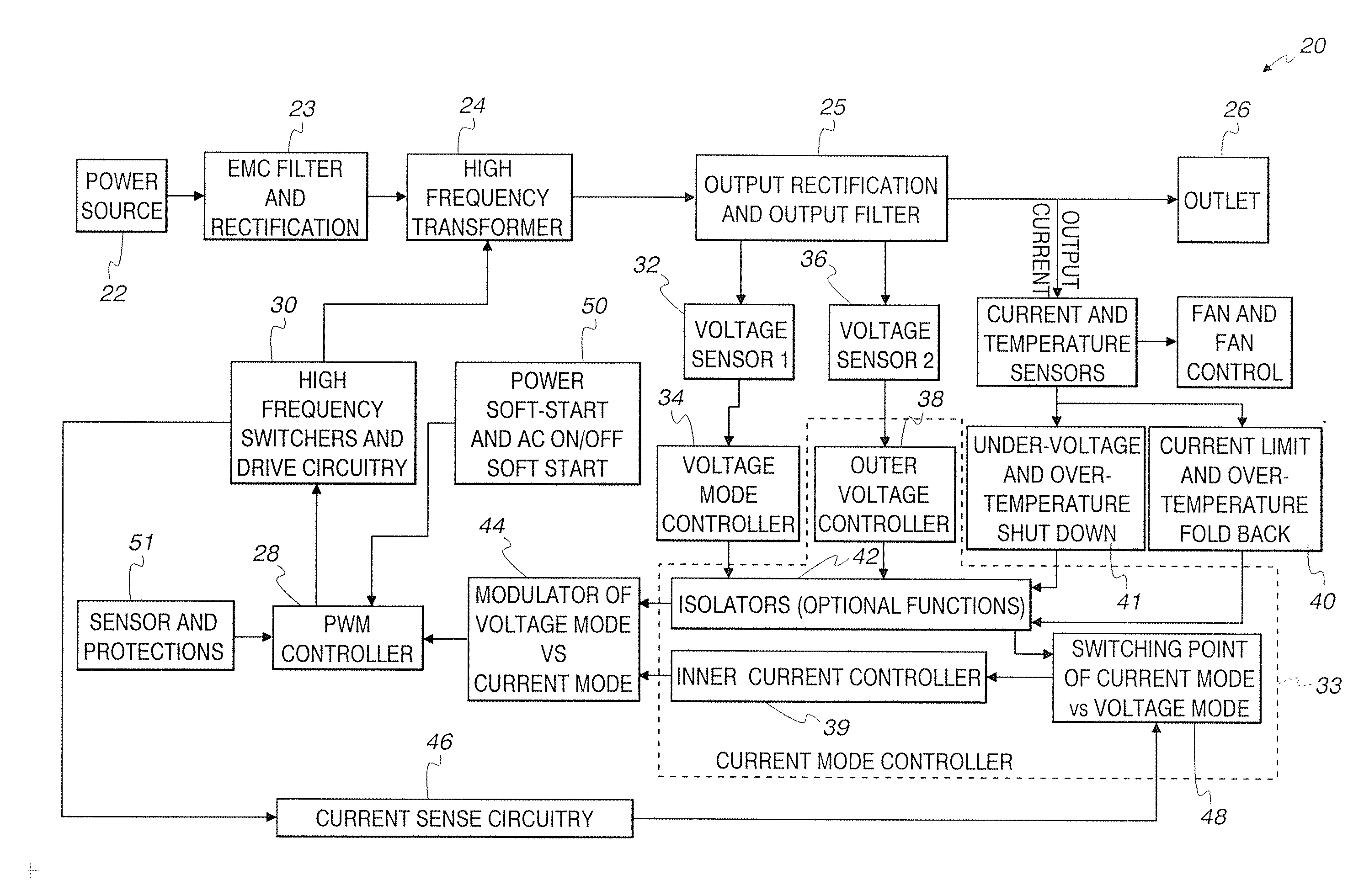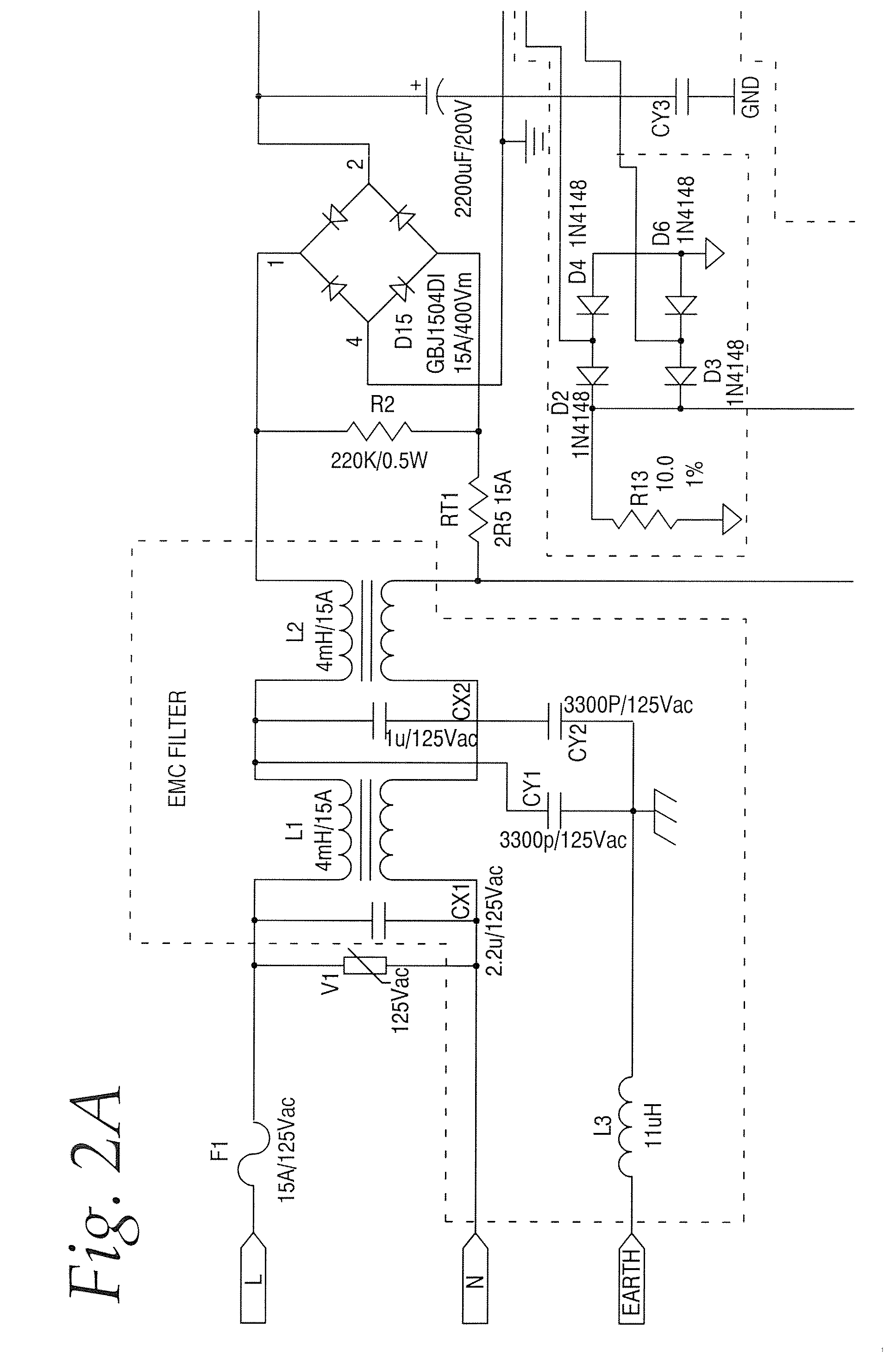RV converter with current mode and voltage mode switching
a current mode and voltage mode technology, applied in the direction of electric variable regulation, process and machine control, instruments, etc., can solve the problems of large power supply weight, inconvenient configuration of power converters with push-pull topology, and slow transient response of voltage controlled converters to input and output load changes, etc., to achieve better performance
- Summary
- Abstract
- Description
- Claims
- Application Information
AI Technical Summary
Benefits of technology
Problems solved by technology
Method used
Image
Examples
Embodiment Construction
[0028] The present invention relates to a switched mode converter that includes both voltage mode and current mode control. The switched mode converter also includes mode logic for switching between a voltage mode and a current mode to combine the advantages of both current controlled and voltage controlled switched mode converters. The principles of the present invention are applicable to both AC to DC converters as well as DC to DC converters.
Exemplary Block Diagram
[0029] Referring to FIG. 1, the switched mode converter in accordance with the present invention is generally identified with the reference numeral 20. The switched mode converter 20 includes a power source 22, a high frequency transformer 24 and an output terminal 26. AC power sources are rectified by a rectifier 23. EMC filtering is also provided. The output of the high frequency transformer 24 is rectified and further filtered by an output rectification and output filter 25.
[0030] The high frequency transformer 24...
PUM
 Login to View More
Login to View More Abstract
Description
Claims
Application Information
 Login to View More
Login to View More - R&D
- Intellectual Property
- Life Sciences
- Materials
- Tech Scout
- Unparalleled Data Quality
- Higher Quality Content
- 60% Fewer Hallucinations
Browse by: Latest US Patents, China's latest patents, Technical Efficacy Thesaurus, Application Domain, Technology Topic, Popular Technical Reports.
© 2025 PatSnap. All rights reserved.Legal|Privacy policy|Modern Slavery Act Transparency Statement|Sitemap|About US| Contact US: help@patsnap.com



